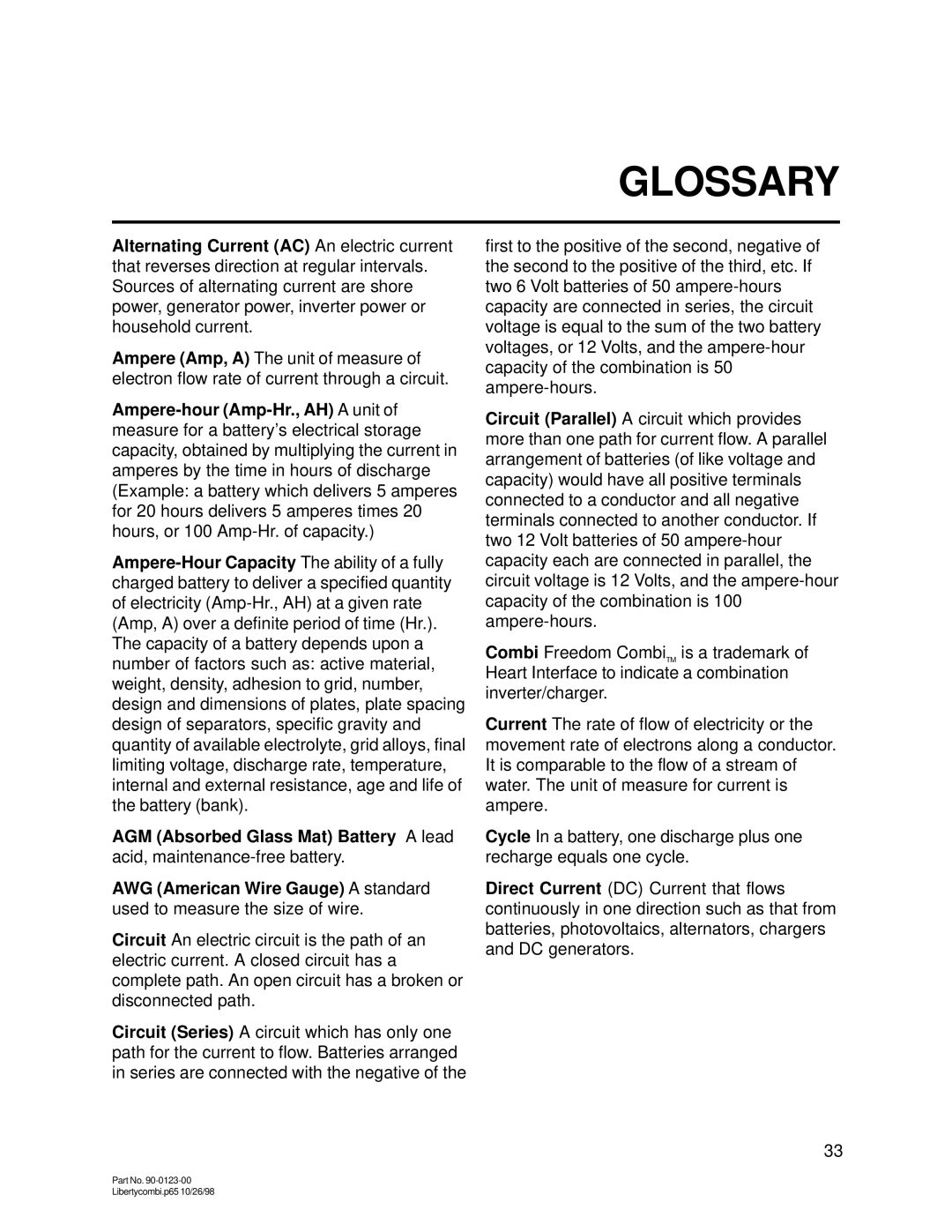GLOSSARY
Alternating Current (AC) An electric current that reverses direction at regular intervals. Sources of alternating current are shore power, generator power, inverter power or household current.
Ampere (Amp, A) The unit of measure of electron flow rate of current through a circuit.
AGM (Absorbed Glass Mat) Battery A lead acid,
AWG (American Wire Gauge) A standard used to measure the size of wire.
Circuit An electric circuit is the path of an electric current. A closed circuit has a complete path. An open circuit has a broken or disconnected path.
Circuit (Series) A circuit which has only one path for the current to flow. Batteries arranged in series are connected with the negative of the
first to the positive of the second, negative of the second to the positive of the third, etc. If two 6 Volt batteries of 50
Circuit (Parallel) A circuit which provides more than one path for current flow. A parallel arrangement of batteries (of like voltage and capacity) would have all positive terminals connected to a conductor and all negative terminals connected to another conductor. If two 12 Volt batteries of 50
Combi Freedom CombiTM is a trademark of Heart Interface to indicate a combination inverter/charger.
Current The rate of flow of electricity or the movement rate of electrons along a conductor. It is comparable to the flow of a stream of water. The unit of measure for current is ampere.
Cycle In a battery, one discharge plus one recharge equals one cycle.
Direct Current (DC) Current that flows continuously in one direction such as that from batteries, photovoltaics, alternators, chargers and DC generators.
33
Part No.
